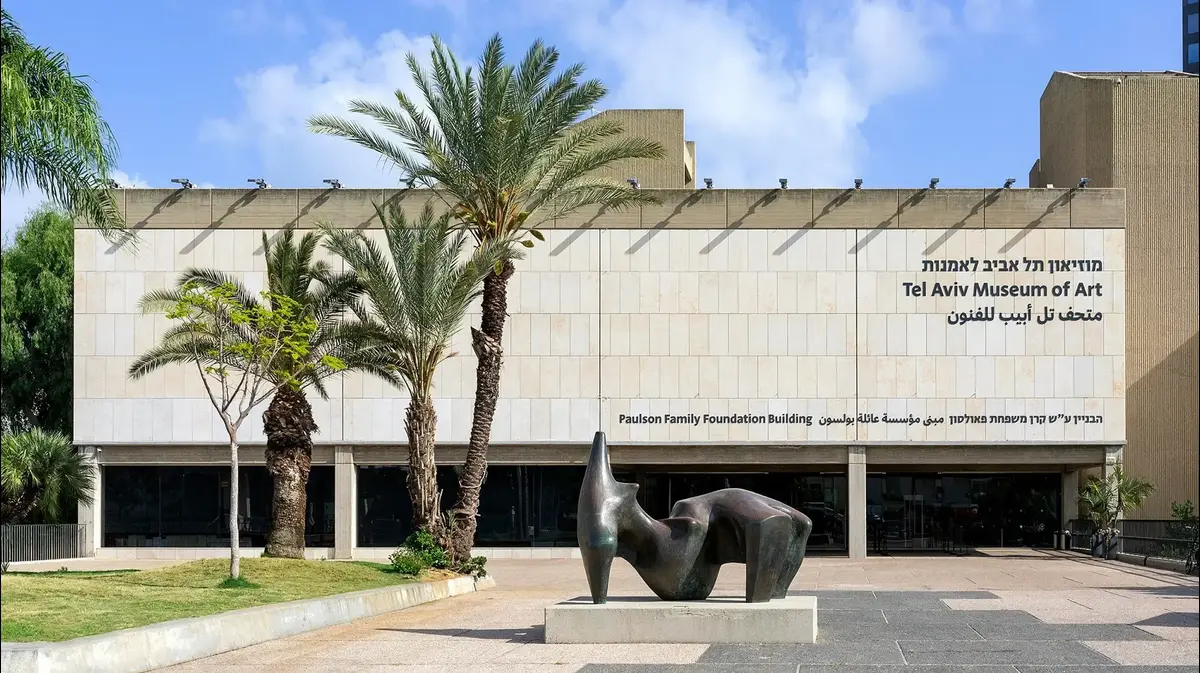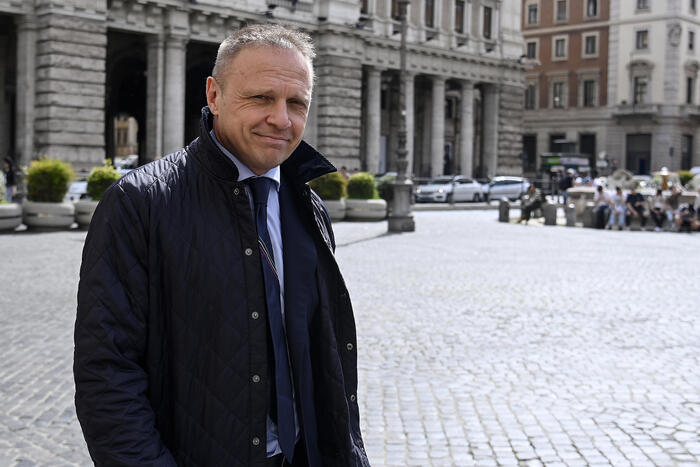The celebration of Arco, the most important specialized fair in Spain is a good opportunity to open a debate about who holds the power within this sector. Do ideas or money prevail? Are artists or collectors more relevant? What is the influence that institutions exert?
The power of resistance
Daniel García Andújar. Artist
The art world is a complex system with many layers, structures, formal networks and languages. It has been built on centuries of power of the ruling class. It is a symbolic economy that operates with the changing currency of prestige and cultural capital. Even so, no one in particular holds, right now, the control power of the system. It is distributed in an increasingly intangible form of global post-capitalism - whose accelerated alienation from the world eliminates art. Making art is the freest form of human work, but it has a huge cost in terms of sacrifice and surrender. Artists often give up our autonomy in exchange for access to an expensive admission system that is based on the systematic abandonment of such innocence. The search for some transcendent meaning in our work faces paradoxes such as the one that most professional artists are forced to monitor the market, whether they like it or not, or respond to the unspoken obligation of having to frame their work within a critical language recognized institutionally. The particular plot of power that corresponds to the artist is not in the market or in institutional recognition. It is based on the development of a transformative and nonconformist artistic practice, a true example of resistance to a imposed model that aims to remain stubbornly in a hierarchical, diffused, globalized and standardized relationship space, producing works that are interpreted, exhibited or marketed within of a discursive structure. That's where the real ideological power resides.
The threads of money
Álex Nogueras and Rebeca Blanchard. Gallerists
Despite the people or entities that may appear on the annual Power 100 list of ArtReview magazine , the one that really moves the threads of the art world is money. In an era of wild capitalism, art is being commodified (in fact, the English word fits better: commodified ). Money instantly deactivates any transformative and radical intention of art, and the market literally absorbs and subverts any revolutionary attempt. Especially at a time like the current one, when the work of art is communicated and has maximum visibility at the same moment of being created, losing the necessary distance for reflection and without having the time to assume a speech. Even so, the market is controlling the most influential events in the art world, creating confusion in the way we perceive fairs, biennials and exhibitions in large museums. The under-financing of these public places has been used by large art corporations to influence programming. The curators face the dilemma of deciding which artists they choose, if they prioritize those who come with the funding set or who really care about them. Fundraising has become a necessity on the part of the institutions and many times that can compromise the program. On the other hand, the establishment feeds this situation, with which it is very cheap to create added value and, therefore, great profits. We are all accomplices of that amoral structure and without legal regulation, and therefore the answer to who rules in the art world can only be one.
It's the market, stupid
Rosa Olivares. Art critic and director of the editorial project 'Exit'
As Augusto Monterroso would say, I will be brief: in the art world he sends money. Who rules in politics? The money. Who rules in sports? The money. To think that in the world of culture is different is not a matter of romanticism, but of blindness or ignorance. The quality of the artist, the intelligence of the curator or theorist (beware, they are two very different things), the excellence of the gallery ..., all that and much more does not shine without the money. Without the money of the collector or the institutions, no artist will appear in the great exhibitions nor will it be acquired by the museums. It is the money. "It's the market, stupid." This is not about sensitivity, intelligence, or experience; This is pasta. That is why nobody cares about the ignorance of the curators, or the operation of the museums, or the care of the artists, or the teaching of art, or culture in general, much less current art in particular. The support of art, and of culture in general, has always come from power; that is, from the money: the Church, the nobility, the monarchies and the great royal houses, the high bourgeoisie, the rich individual collectors who give way to financial corporations ... Naturally, that other power to define artistic lines, in addition to the market , some museum directors still have it, few and very influenced by markets and personal and private interests. All the others are actors in a comedy bufa to which the public has already turned its back.
The honesty of the artist
Hans Ulrich Obrich. Commissioner and artistic director of the Serpentine Gallery in London
The power is always with the artists. Despite the peaks of prominence and influence of the different agents of the art system, artists are at the center. At a time like the current one, of real ecological danger, there are many of us who look for artists how to shape the future. I think of the artist Gustav Metzger, for example, who died a few months ago. From his practice, he called on the art world to wake up to the threat of destruction of the planet. It has inspired us to place ecology at the heart of everything we do as professionals in the field of art. As curators, museum directors, art critics or mediators, our role is to expand the influence of artists. Any art form is often about the power of connecting seemingly unconnected things. Artistic institutions can be a good tool for this, to unite geographies, ideas and ways of life. When they use their power as platforms for thought, the world's most serious problems can be understood with honesty and hope. There is another key idea: that does not happen without generosity, which is the middle of the 21st century. Beyond names and lists, there is the real power. That should command above all things.
Patriarchal axis
Manuela Moscoso. Commissioner of the Liverpool Biennial 2020
The power of this world is generated through a cluster of alliances, while its strength is given by the power of legitimation that the collective consensus has when defining whether something is right, outstanding or worthwhile in the current context. These consensuses are built as a result of the circulation, dissemination and distribution of practices facilitated by a combination of contacts, work, money and, often, privileges associated with private social classes and based in Western geopolitics. It is a complex issue. Fortunately, the art world is also a non-stable system and has the capacity to generate self-criticism and resist against conventional mandates that are associated with power economies. Art is, after all, experiences, propositions, aesthetic positions of being in the world, as history and as future. I know many professionals who, from their own work practices, exercise counterpoints, challenge the status quo and promote productive and unpredictable pollutants, capable of making us think differently, experiencing forms of existence we did not know or connecting everyday experience with stories and seemingly absurd micro stories. And this is wonderful. However, it must also be said that art as a system is founded under a tremendously patriarchal, normative and colonial order, which today still supports, promotes and courtses those who, at the time of working and operating in the world, retain that same old patriarchal, normative and colonial order.
In search of antagonism
Paul B. Precious. Philosopher associated with the Pompidou Center in Paris
Misunderstandings arise from a false idealization of art and artistic genius as autonomous universes, separated from political or social orders. Contemporary artistic production is inserted within the patriarco-colonial regime, the capitalist market and the institutional framework of the different social and political contexts where it circulates, both democratic and clearly authoritarian. To ask who rules in the art world would be something like asking who rules in the automobile world: we would have to explore the production-distribution-consumption-criticism circuits of cultural industries, the different government regulations, the public and their social practices and criticism. I think the question is rather how to create antagonistic processes, how to depatriarize and decolonize the institution and the dominant narrative of art history, how to distribute agency. The problem with the movements of criticism that arise within art is that its force of transformation is absorbed by both hegemonic narration and by the institution and the market, and transformed into a more "style". This is what is happening with the “fashion” of feminist exhibitions, or about the “genre” with the artists of the “global south” or with artivism.
Class question
Helena Cabello and Ana Carceller. Artists
It seems a complex question, but unfortunately it is not so much. Fundamentally, in art, power remains a matter of class, social and economic. It is held through pressure groups made up of advisors, gallery owners, entrepreneurs, managers and / or artists belonging, usually by family ties, to the elites. These groups also often involve other agents, necessary for conceptual renewal; They serve to provide some risk, but without going over. Unlike other cultural manifestations, the way in which artistic production is marketed, managed and presented particularly benefits those elites and their environment. The rest of society barely has a voice. The most interesting thing about this question is that part of a singular. He does not ask who but who, because, deep down, who asks possibly suspects that there are not so many involved. It would be easy to give an elusive response and escape with structural abstractions, but what we have seen throughout this time is how those ruling classes, more cohesive in their interests than would be desirable in societies that call themselves democratic, were imposing their criteria. in different areas of collective artistic memory management. Its unbalanced presence in museum boards, mostly managed with public money, is just the tip of the iceberg. The most visible example that shows how worried they are to turn their private interests into a canon, to supplant the community.
The genuine question
Diego star. Professor and academic of the Royal Academy of San Fernando
The warbugrianos of the London institute, following the trail of their inventor - the author of the Atlas Mnemosyne , Aby Warburg -, spoke of "the genuine question", that unique and capable of answering the relevant on a specific question. To find that "genuine question," they said, was to have a brilliant answer, because proposing a good question is much more complex than answering it. Personally I am not so sure that the question “who rules in the art world” - or what rules - is the “genuine” one, which could contribute to unraveling the unsettling of a territory full of landslides and characters in apparent transit. Nevertheless, that rhetorical question sometimes flies over the conversations. Money in all its meanings, from multinational corporations to influencers and networks with indirect or direct salary of money, through star curators , directors of large museums, important collections, international awards juries and thriving gallery owners who now run museum galleries are usually One of the favorite answers. That was what Martha Rosler wondered in her 1979 text about voyeurs and shoppers: that money in her own arena is unbeatable, she reflected. In any case, to say that what rules in the art world is money is to say the obvious, because it has been so since the Medici and papal orders. In addition, money usually extends its tentacles to the artistic scene from less visible places. I do not know who rules in the art world and, above all, if it helps to know beyond the speeches that are generated.
Indomitable practices .
Marta Gili Police station
The art world is very broad and heterogeneous. The issue of sending, that is, of governing a group of subordinates, it seems to me that, by definition, it cannot be applied in artistic creation, place by definition of freedom of thought and expression. Another thing is who intends to control or prescribe in these spaces, which of course occurs very often. But fortunately, there are still some indomitable artistic practices, from literature to visual arts, design or architecture, for example, that are inscribed in peripheries and intersections, from poetic to political, rarely subject to established trends. The role of institutions and curators would be to give visibility and context, effectively, to those artistic practices that are outside the mainstream circuits and that analyze and investigate the world through devices that configure a sense of life lived and that allow us to experience and perceive our surroundings in another way.







